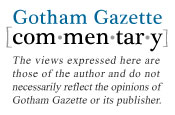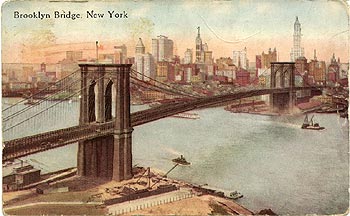Hunger After Superstorm Sandy: Why We Need The Kosher and Halal Food Act
More than one million New Yorkers are in danger of going hungry every year, according to the National Coalition Against Hunger. Even before super storm Sandy hit, our city’s emergency food providers saw a 20 percent increase in the need for their services in 2012 — with the fastest growth in demand from families with children. Since Sandy, the number of people who need food assistance is only increasing.
 Observant Jewish and Muslim families are not immune from this crisis. In fact, an estimated 330,000 Jewish households in New York City and 300,000 Muslim households in the tri-state area live in poverty. Because of the dietary requirements of their faith, many families we serve are unable to rely on the federally funded network of food pantries to feed their families. As social service providers, it is not unusual for us to see dozens of families in a single day who are going hungry because there are no Kosher and Halal options in food pantries. And since the storm, we have had to double our efforts to serve families in the hardest-hit communities while continuing to help those in need outside of Zone A.
Observant Jewish and Muslim families are not immune from this crisis. In fact, an estimated 330,000 Jewish households in New York City and 300,000 Muslim households in the tri-state area live in poverty. Because of the dietary requirements of their faith, many families we serve are unable to rely on the federally funded network of food pantries to feed their families. As social service providers, it is not unusual for us to see dozens of families in a single day who are going hungry because there are no Kosher and Halal options in food pantries. And since the storm, we have had to double our efforts to serve families in the hardest-hit communities while continuing to help those in need outside of Zone A.
The examples are heartbreaking. After Sandy, a Muslim single mother with three young children did not have enough money to go grocery shopping. When she sought help at a public food pantry, none of the food available was Halal. A low-income Jewish family with two children under the age of five lost power during the storm and all of their Kosher food was ruined. Volunteers came to the neighborhood to help out in the only ways they could, but without any kosher food.
For these needy New Yorkers, the resources simply are not there and they are faced with an impossible choice -- sacrificing their faith or going hungry. Imagine looking into your child’s eyes and telling him or her that there is no protein for dinner.
Thankfully, Senator Kirsten Gillibrand and Congressmember Joe Crowley have introduced legislation that would ensure that some of our state’s most vulnerable families will no longer have to go hungry. As part of the Emergency Food Assistance Program (TEFAP), the Kosher and Halal Food Act of 2013 would increase the supply of food for Kosher and Halal food pantries to address this demand, hopefully decreasing the number of New Yorkers going hungry in 2013 and beyond.
The legislation would also require the U.S. Department of Agriculture (USDA) to target, label, and track distribution of Kosher and Halal food to ensure that food bank operators can properly identify the protein for those who need it. Providing these types of meals would help so many in need, and would come at no extra cost to the state.
We agree with Senator Gillibrand when she says that “we must take steps to help the neediest observant families and children get access to nutritious food during these difficult times.” Now more than ever, as Sandy has devastated our most vulnerable populations and caused even more families to slip into poverty, we must take this simple step to ensure that no one is left behind.
____
William Rapfogel, executive director & CEO of the Metropolitan Council on Jewish Poverty
Mohammad Razvi, executive director of the Council of Peoples Organization
Guest Commentary: The Unity Map and City Council Redistricting
NEW YORK — The redistricting battles are here again. Every 10 years, the New York City Council embarks upon a quasi-independent process of redrawing its legislative boundaries to comport with the demographic changes evidenced in the U.S. Census.
And every 10 years activists, lawyers, elected officials and political pundits weigh in on what is essentially a bare-knuckles political exercise.
Earlier this year, the worst aspects of redistricting made a comeback appearance in Albany.
First, the Legislature completely abdicated its role in redesigning congressional districts, forcing a federal court to usurp a state function at considerable public expense.
Then the three men in the room brokered a late night resolution of state Senate and state Assembly lines that especially flummoxed the liberal activists who were well within striking distance of initiating independent redistricting at the state level, but now have nothing to show for their efforts. New York City Council redistricting is an entirely different affair. Gone are the partisan battles between D’s and R’s. Instead, political machinations about positioning for mayoral and City Council president runs provide the subtext for who’s on the outside looking in during redistricting.
New York City Council redistricting is an entirely different affair. Gone are the partisan battles between D’s and R’s. Instead, political machinations about positioning for mayoral and City Council president runs provide the subtext for who’s on the outside looking in during redistricting.
Term limits clearly add another layer of complexity or, should I say, relief, since it reduces the incumbent protection mantra that characterizes most redistricting wars.
All of it lands in the lap of the Redistricting Commission appointed by the Council and the mayor that provides, at least in part, a buffer between naked political ambition and revenge and transparency.
The process, however, is also beholden to the principles of racial and language minority equality as embodied in the Voting Rights Act, the federal law that has clearly protected marginalized voters from Black, Asian and Latino communities from the abuses of incumbency protection.
 This is where the Unity Plan comes in as a marker of what a compromise plan that strives to comply with federal and state law can achieve in a complex, multi-racial city. Produced by mappers, activists, and lawyers from the Asian American Legal Defense & Education Fund, the Center for Law & Social Justice at Medgar Evers College, LatinoJustice PRLDEF, and the National Institute for Latino Policy, the Unity Plan represents months of mapping scenarios, community meetings, legal discussions, and consultation with minority elected officials.
This is where the Unity Plan comes in as a marker of what a compromise plan that strives to comply with federal and state law can achieve in a complex, multi-racial city. Produced by mappers, activists, and lawyers from the Asian American Legal Defense & Education Fund, the Center for Law & Social Justice at Medgar Evers College, LatinoJustice PRLDEF, and the National Institute for Latino Policy, the Unity Plan represents months of mapping scenarios, community meetings, legal discussions, and consultation with minority elected officials.
The Voting Rights Act requires the city to demonstrate that the voting strength of protected minorities in three of the city’s boroughs does not retrogress compared to what they possessed at the time of the plan’s submission for federal approval, or preclearance.
The Act also has a general guarantee on non-discrimination that provides blacks, Asians and Latinos an equal opportunity to elect their candidates of choice.
Finally, the constitutional requirement of equality in population, “one person, one vote” and the case law mandate that prohibits the division of communities of interest created additional guide posts for the Unity Map engagement.
Following these precepts and accounting for the shifts and increases in black, Asian and Latino populations, the overall Unity plan unites communities of interest between Asians in Chinatown and Latinos in the Lower East Side; reduces significantly the fracturing of Asian communities in Richmond Hill and Bensonhurst; creates an additional Latino majority district in upper Manhattan; and solidifies black communities of interest in Jamaica and Canarsie.
The Unity Map is the first citywide proposal received by the Redistricting Commission that attempts to address the multiple requirements under voting rights law.
But it really is an opening salvo in a longer engagement with the public and the commission.
Earlier this week, the commission issued its own preliminary draft, which itself is the starting point for negotiations. At least it better be because the commission’s plan egregiously splits Asian communities in Bensonhurst, Ozone Park, Richmond Hill, Elmhurst and Bayside; black communities in Canarsie and Wakefield; and Latino communities in Soundview, Bronx River, Westchester, Mount Eden, and Highbridge in the Bronx.
In short, the commission has yet to fully account for the distribution of racial and language minorities – something that it must do successfully to obtain preclearance, and something that the Unity Plan proponents will monitor vigorously.
___
Juan Cartagena is president and general counsel for LatinoJustice PRLDEF, a civil rights and advocacy organization founded in the early 1970s.
Moving Around the City -- A Quiz About Transportation in New York
p>
 |
Simply click on the circle next to the answer you think is correct, and an answer will appear in the box below. Keep trying until you get the correct answer. To learn more about the subject, click on the Gotham Gazette story after each question.




